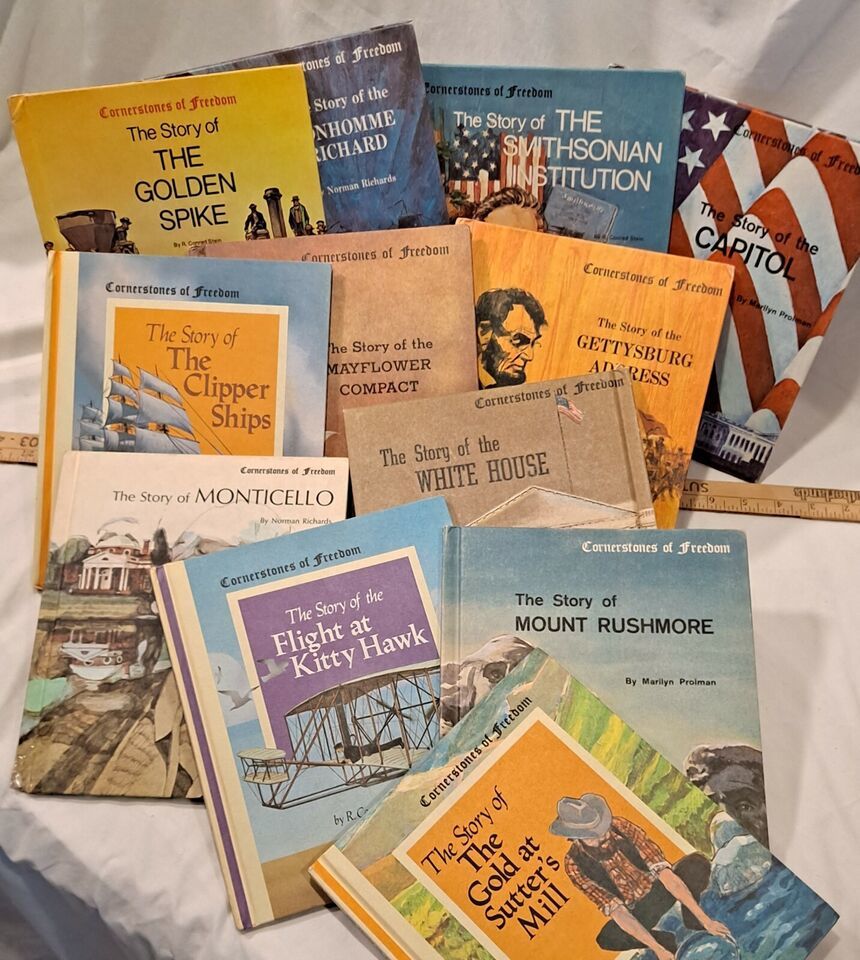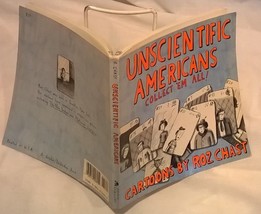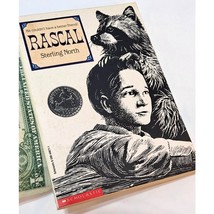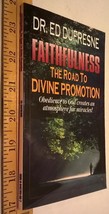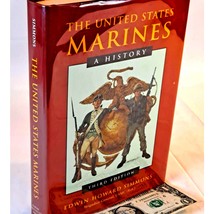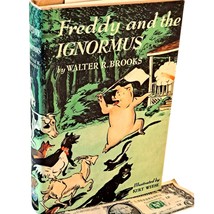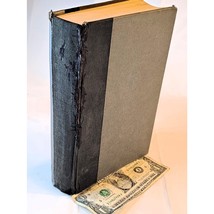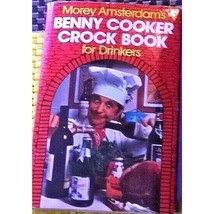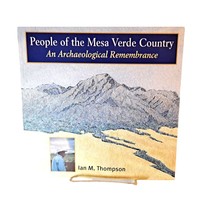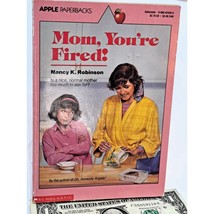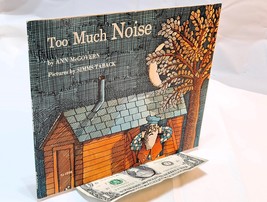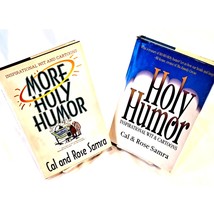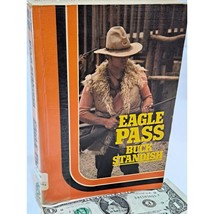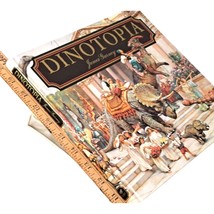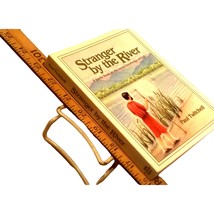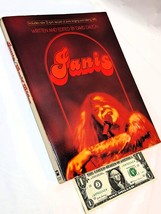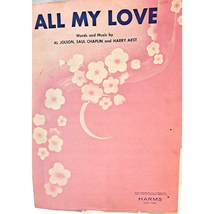12 titles from "Cornerstones of Freedom"
series (1973-81 Hardcovers w/o DJ)
5 individual authors, 9 individual illustrators
Publisher: Children's Press Chicago, IL U.S.A. 1973-81
12 unique titles from the
"Cornerstones of Freedom" series printed between 1973 and
1981 (1977 average). 5 are 1st Editions. All were privately owned
with no markings of any kind, tightly bound, but none have dust
jackets. 10 are Very Good or better. One had bucket of cleaning
water set on front end-pages and another had foot of spine chewed off
by a puppy. I'd rate the later pair as Fair.
Short readings for 4th grade plus
readers. Each covers a unique topic from United States of America's
history.
Specific information follows:
1. The Story of the Mayflower Compact
(1967) by Norman Richards, illustrated by Darrell Wiskur. Presents
the background to the contract signed by the Pilgrims, which
guaranteed equal rights to citizens under a democratic form of
government. ISBN: 0-516-04625-X 6p 1975. L
2. The Story of Monticello (1970)
by Norman Richards, illustrated by Chuck Mitchell. Brief
biography of Thomas Jefferson, revolving around the wonderful mansion
he designed, built and loved, Monticello. ISBN: Not Available. 2P
1973. A
3. The Story of the Bonhomme Richard
(1969) by Norman Richards, illustrated by by Tom Dunnington.
Brief biography of John Paul Jones and his command of the Bonhomme
Richard (?I have not yet begun to fight!?). ISBN: Not Available.
4P 1975. L
4. The Story of the White House (1961)
by Natalie Miller, illustrated by John Hawkinson. James Hoban
planned a mansion that would grow with the country. In 1792, it was
began, but each President has added something to the life of the
mansion so that it is now one of the most famous houses in the world.
ISBN: 0-516-04644-6 . 18p 1976 N
5. The Story of the Capitol (1969) by
Marilyn Prolman, illustrated by Bob O'Malley. William Thornton,
physician, portrait painter and steamboat inventor, won the
competition to design and direct the construction of the Capital
building in Washington, D.C. ISBN: Not Available. 4P 1975. L
6. The Story of the Clipper Ships
(1981) by R. Conrad Stein , illustrated by Tom Dunnington.
Discusses the design, uses, sailing, and decline of clipper ships
that enjoyed a short but glorious reign of the seas during the
mid-1800's. ISBN: 0-516-04612-8 1p 1981. N
7. The Story of The Smithsonian
Institution (1979) by R. Conrad Stein , illustrated by Richard Wahl.
Describes the contents of the 13 separate buildings of the
Smithsonian Institution in Washington, the activities of this
institution, and its mysterious origins in 1846. ISBN: 0-516-04635-7
1p 1979. V+
8. The Story of The Gold at Sutter's
Mill (1981) by R. Conrad Stein , illustrated by Lou Aronson.
Presents the scene in California after gold was discovered on John
Sutter's land in 1849 and the subsequent fortunes made and hearts
broken. . ISBN: 0-516-04617-9 . 1p 1981 V+
9. The Story of the Gettysburg Address
(1969) by Kenneth G. Richards, illustrated by Tom Dunnington.
Briefly describes the Battle of Gettysburg and the dedication of the
battlefield as a Soldier's National Cemetery, including the text of
President Lincoln's famous speech. ISBN: 0-516-04615-2 . 3p 1974
A+
10. The Story of The Golden Spike
(1978) by R. Conrad Stein , illustrated by Tom Dunnington. Relates
the events surrounding the completion of the world's first
transcontinental railroad at Promontory, Utah, in 1869. ISBN:
0-516-04621-7 . 1p 1978 V+
11. The Story of the Flight at Kitty
Hawk (1981) by R. Conrad Stein , illustrated by Len W. Meents. A
brief biography of the two famous bicycle makers from Dayton, Ohio,
focusing on their efforts to build and fly an airplane, starting with
kites and gliders. ISBN: 0-516-04614-4 1p 1981 N
12. The Story of Mount Rushmore (1969)
by Marilyn Prolman, illustrated by Phil Austin. Describes the
difficulties in carving the monumental heads of Washington,
Jefferson, Lincoln, and Roosevelt on the side of Mount Rushmore.
ISBN: 0-516-04626-8. 3P 1975. L
Size: 8vo - over 7 - 9"
tall, Pages not numbered.
Condition:
Hardcovers w/o DJ ? Always Privately Owned. Most BOM Editions.
Notes on
Condition/Edition
ratings:
Fine ? means like new, but any book produced over 10
years ago isn't ?brand new? or even ?new.? Booksellers
needed some word to describe this...
Like New ? A new book, no marks no damage (except
maybe remainder marks or shelf-wear) except not obtained
directly from the publisher or in packaging from the publisher.
Very Good ? How you or I might take care of a book,
closer to ?as new? than standard. Might show ownership.
Good ? How someone else might take care of a book.
Also referred to as ?standard.? This is the most likely condition
for books of this age title, shows the book has been read or
previously owned.
Acceptable ? How a child, student or a librarian
might take care of a book. (Either trying to make sure someone
doesn't steal it by plastering ownership everywhere, filled it with
copious notes or a book that has been damaged.)
Poor ? Combination of ?acceptable? factors above.
Most likely with water damage as well. Might have missing pages (you should ask).
Near ? Means ?almost? in an optimistic sense.
e.g., ?Near Fine? means very good, but on the high end.
1st
Thus
? Unique somehow, maybe 1st
paperback,
new illustrator, misprint or even the 1st
edition.
A collector might desire this copy.
Thanks
for looking!


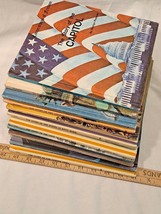 12 titles from "Cornerstones of Freedom" series added to cart.
Only one available in stock
12 titles from "Cornerstones of Freedom" series added to cart.
Only one available in stock
 Please wait while we finish adding this item to your cart.
Please wait while we finish adding this item to your cart.








